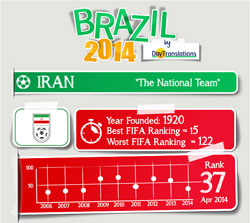Many companies around the world consider the Southeast Asian market as one of the fastest-growing markets. The growth is mainly due to the young consumers who are driving changes in the region’s economy.
While China is a colossus in the emerging markets category, the multinationals and investors are focusing on the ten growing markets of the ASEAN or the Association of Southeast Asian Nations. The development in each member country of the ASEAN is on different levels but every country is showing huge potential for growth. The ASEAN region a very important hub for global trade and manufacturing. Moreover, it is one of the world’s fastest-growing consumer markets.
Unlike in Europe however where neighboring countries share some similarities that make it easier for companies and organizations to quickly identify their target markets, the Southeast Asian market is vastly different. Each country has its own complex economic and business systems, making it necessary for investors to fully understand each market individually.
Understanding the Southeast Asian Market For a full understanding of the Southeast Asian market, investors have to understand the complex and sometimes contradictory nature of the consumers in the Philippines, Indonesia, Vietnam, Thailand, Malaysia, Myanmar, Laos, Brunei, Singapore and Cambodia. By 2050, the projection is that the region will be the fourth-largest economy in the world.
1. Southeast Asia is a huge market
Collectively, these member states create a formidable economic group with an estimated population of 651 million. In 2018, the estimated total nominal GDP was US$3.0 trillion with a per capita of US$4,600. According to the projection of the Organization for Economic Cooperation and Development (OECD), the region’s annual average GDP will have an average growth of 5.2% from 2019 to 2023.
Individually, the annual projections for economic growth for the same period vary. The CLM countries (Cambodia, Laos and Myanmar) show the highest annual economic growth projections.
· Lao PDR – 7.0%
· Myanmar – 7.0%
· Cambodia – 6.9%
· Philippines – 6.6%
· Vietnam – 6.5%
· Indonesia – 5.3%
· Malaysia – 4.6%
· Thailand – 3.7%
· Singapore – 2.7%
· Brunei Darussalam – 2.0%
2. Southeast Asia is diverse
About 40% of the economic output of the region comes from Indonesia, whereas Myanmar is still a new market that is still building the necessary institutions after years of isolation. Singapore’s GDP is 30 times more than the GDP of Laos and even higher against the GDPs of Myanmar and Cambodia. Understanding the Southeast Asian market is to understand its diversity in terms of religion, language and culture. For example, Thailand is predominantly Buddhist while over 80% of the Philippine population is Roman Catholic. Indonesia on the other hand, is primarily Muslim. Investors should know about the cultural sensitivities and preferences of each target market in Southeast Asia to ensure success.
3. Consumer demand in the Southeast Asian market is growing rapidly
Since 2000, the income growth in the region stayed strong, with over 5% in average annual gains. About 14% of the population in Southeast Asia used to be below the $1.25 a day international poverty line. In 2013, only 3% remained at that level.
Today, around 67 million households in the region belong to the consuming class whose incomes enable them to have more money to buy products outside of their basic needs. The projection is that the number of households will reach 125 million in 2025, turning the Southeast Asian market into a critically important consumer market very shortly. While Southeast Asian consumers differ, trends show some similarities. Many of the emerging consumers in Southeast Asia are showing interest in leisure activities. They are increasingly aware of brands and showing a preference for new formats for retail.
A big section of Southeast Asian consumers is in their mid-30s, thus they still have so many opportunities to earn bigger incomes. Vis-à-vis the increase in income is the increase in purchasing power.
4. New consumer profile
Consumers in the Southeast Asian market have changed their profile. They now use more mobile devices, computers and the Internet. Consumers with ready access to the Internet are increasing their purchasing power. They are now more inclined to make online purchases, whether they want household items, health and beauty aids, fashion, and electronic devices.
Urbanization is a contributing factor in the growth of the consumer market in Southeast Asia. Many of the region’s population are moving into cities and they represent over 54% of the GDP of Southeast Asia. By 2025, more than 54 million will be living in highly urbanized cities. By all accounts, the region’s GDP growth until 2025 will originate from 142 cities in Southeast Asia with populations from 200,000 to five million.
The increasing penetration of the Internet around the Southeast Asian market induces consumers in the region to make online purchases. Internet penetration in the region is about 25%, while mobile penetration so far is about 110%. Consumers who use Facebook rank second to the U.S. However, you have to keep in mind to treat each country separately since the statistics do not represent across-the-board figures. The penetration of smartphones and the number of online users in Singapore for example, vary greatly from the figures you are going to get from Myanmar.
5. Emerging middle class
Throughout Southeast Asia, the focus is on the growing middle class. From their ambition and hard work, their incomes are rising. It’s projected that by 2022, around 50 million consumers will be added to the middle class populations in Vietnam, the Philippines, Thailand and Malaysia, increasing the middle class population to 350 million. The combined disposable income of the region’s middle class is going to be around $300 billion in about three years.
These new consumers have better access to the digital economy, which allow them to view a bigger online world outside of their local community. With the increase in their incomes, they are propelled to think of the many things they can enjoy, things that only their more affluent friends, family and neighbors used to have.
6. Need for strategic approaches
International companies wishing to invest in the Southeast Asian market should do a detailed analysis of their market research. They must formulate the right strategic approaches to penetrate each market.
As mentioned, the consumers in Southeast Asia are such a diverse group. Many are still struggling to find the right balance between modern and traditional cultures. Likewise, companies have to change their approach. Most of the businesses in the region are used to traditional methods. They were able to grow their businesses by providing products to the upper-middle class and the more affluent consumers confined in urban centers. Today they have to appeal and reach a brand new group of consumers whose profiles differ from their former customers. These new consumers likewise have different media behaviors and consumption habits.
The middle class in Southeast Asia today is located everywhere, both in rural and urban settings. Although economic growth is more visible in the huge capital cities, many of the emerging middle class consumers come from communities surrounding affluent business districts.
Conglomerates need to understand that modern consumers have changed their purchasing habits. With the increase in disposable incomes, the consumer is now not cost-conscious as before. They shop using different channels and can afford to buy items in bigger containers rather than sachet packages. They also have more access to various channels of communication outside of the traditional newspapers, word of mouth, radio and television.
New Southeast Asian consumers are touched by the digital era that provides more choices for them. They have discovered the world of online shopping, which gives them the power of choice. The resilience and ingenuity of Southeast Asians enable them to retain their ties to their traditional cultures while embracing digital connectivity. With the combination, they can have different points of view and different ways to express themselves.
7. The emergence of the mass-affluent market
Another thing that international businesses should know about is the emergence of the mass-affluent market segment in Southeast Asia. The region is known for having a population of workers who are patient, resilient and industrious. While the movie ”Crazy Rich Asians” showed ultra-rich people who do not think twice about spending money and enjoying their wealth, which they either inherited or gained through windfalls in security and property trades, they only constitute a very small minority of the total population in the region. The mass-affluent today makes up about 40% of the household wealth in several markets in Southeast Asia and about 10% of the population in the region’s most developed markets. However, the mass-affluent population is predicted to increase to 21% by 2030, which will represent about 136 million people.
They represent a young population who are still under the age of 40. They received a good education and increased their wealth by being business owners or salaried professionals. They represent a market segment that can now afford to purchase luxury goods. In the process, they also change their consumption habits and discovering premium products in different categories such as footwear, beverage, food and personal care. They travel for leisure, splurge on luxury brands yet still enjoy hunting for local brands that are not available anywhere.
What makes them different? While they enjoy splurging on luxury items, they are still careful about their money. They research to ensure that their purchases are worth the money they pay for them. They may use digital media but they still enjoy the experience of shopping through traditional means. Their preferences change as well. From being buyers of mass-produced items, they move to consume premium and luxury products.
Another thing to keep in mind. The mass affluent population is expected to grow faster than the middle class in Southeast Asia. Further, the market segment wants to enjoy a luxurious lifestyle that will differentiate them from others.
Unlike the nouveau riche who tend to buy indiscriminately, the mass affluent are pickier and critical of the items they want to purchase because they want to show that they have refined tastes that fit their personality.
These are some of the top insights international companies have to know to penetrate the Southeast Asian market and reach the region’s huge consumer base.
Facilitate Communication in Diverse Global Locations
Southeast Asia is a vast market that shows plenty of potential for international business growth. As the region comprises different cultures with different languages, traditions and preferences, this means you need help to communicate in the preferred language. Day Translations, Inc., a global translation company can provide accurate translation of business documentations, official communications and other paperwork that need professional translation. Our native-speaking translators live in-country, so they understand not only the local language but the local culture as well. It is easy for us to connect you to our translators, as we are open 24/7, every day of the year. Simply give us a call at 1-800-969-6853 or send us an email at Contact us












Sorry, the comment form is closed at this time.